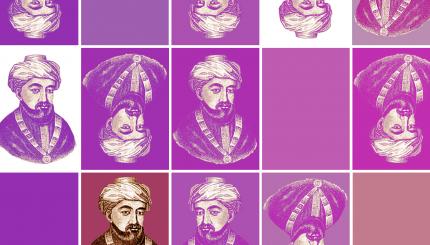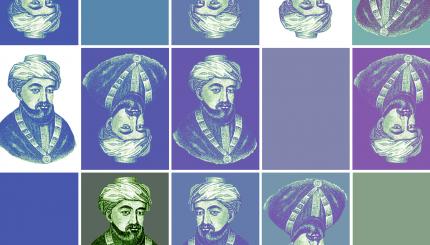Throughout Jewish history even into the modern era, marriage has been considered an essential experience of Jewish adulthood. Observing Adam, God pronounces that “it is not good for the human to be alone” and creates a partner to be an ezer k’negdo, a “helper opposite him”(Genesis 2:18). A rabbinic midrash, or interpretation, presents Rabbi Ya’akov’s understanding of “not good”: “[Regarding] every [man] who does not have a wife… there is no goodness with no helper, no blessing, no repentance…” (Genesis Rabbah 17:2)
 Partnership
Partnership
Jewish tradition cites many practical, spiritual, and emotional reasons for institutionalizing male-female partnership. In the patriarchal societies from which biblical and talmudic culture emerged, women and children required protection and sustenance. The Jewish laws of marriage and divorce were in part intended to specify these basic needs and to obligate men to provide them. For men, marriage provided a legitimate sexual outlet that could prevent sexual yearnings from interfering with proper conduct.
Beyond these practical considerations, we find that Adam and Eve in the garden, archetypes of lovers and companions, establish a pattern for all subsequent couples, who should view each other as “one flesh.” Sexuality is part of this image, allowing man and woman to become one body, as they were (in one interpretation) before God separated them. The 13th-century Bible commentator Nahmanides, commenting on Genesis 2:23-24, emphasizes the bond that human partners ideally have: unlike the arbitrary mating of animals, men and women should cling to one another.
The ezer k’negdo concept, applicable to men as well as women, is vital to the Jewish concept of life-long partnership. Tradition understands the potential of partners to provide each other with assistance and to work together in complementary ways.

Help us keep Jewish knowledge accessible to millions of people around the world.
Your donation to My Jewish Learning fuels endless journeys of Jewish discovery. With your help, My Jewish Learning can continue to provide nonstop opportunities for learning, connection and growth.
Examining the marriages of the biblical matriarchs and patriarchs, the exemplar promoted by the talmudic sages is that of Isaac and Rebekah. Unlike the “love at first sight” romance of Jacob and Rachel, Rebekah and Isaac are brought together by parental arrangement, through Abraham’s servant (Genesis 24). Rebekah’s presence comforts Isaac, in particular easing his mourning for Sarah, his mother (Genesis Rabbah 60:16). Matched in their righteousness, Rebekah and Isaac are partners in promoting God’s plan, even if their actions at times conflict. In the rabbinic imagination, their mutual loyalty leads Isaac to refuse additional wives, despite Rebekah’s initial infertility.
Although procreation is a major role of sexuality and marriage, we see from their approbation of Rebekah and Isaac that the sages saw value in marriage apart from childbearing and preferred monogamy. Though permitted by Jewish law and common in the biblical period, male polygamy was rare by the time of the Talmud. Eventually, European Jewish communities forbade it. (Female polygamy was forbidden.)
 Marital Structures
Marital Structures
Monogamy logically grows out of the focus on holiness (kedushah) in Jewish life. Intrinsic to the holiness concept is the idea of setting apart; here, each spouse sets himself/herself apart in relation to his/her spouse by abstaining from sexual activity with others. The wedding ceremony itself is known as kiddushin (“sanctification”). Husband and wife are to model the holiness and peace desired for the whole world. Thus, it is considered especially meritorious to contribute to peace between a husband and wife.
In recent decades, traditional gender roles in Judaism, including within marriage, have been subject to analysis and much criticism. Rabbinic law attempted to protect the rights of women in marriage (to sexual pleasure, financial security, and protection from abandonment). On the other hand, perceptions of “rights” are determined by social setting. Most infamously, while some Jewish communities prohibited domestic abuse and marital rape, as offenses to a peaceful household, others allowed them. Differences between communities in the rights, privileges, and honors granted Jewish wives have been largely shaped by the context of the local non-Jewish culture.
Gender roles are not the only aspects of marriage subject to contemporary reassessment. The norm of male-female marriage has also been called into question, with a variety of responses. Gays and lesbians have sought communal support for their partnerships, evoking a range of responses. Jewish community institutions, to varying extents, have become aware of the needs of such couples, and of single Jews as well, whose family patterns depart from the pattern of heterosexual marriage that was a nearly universal feature of pre-modern Jewish life.


